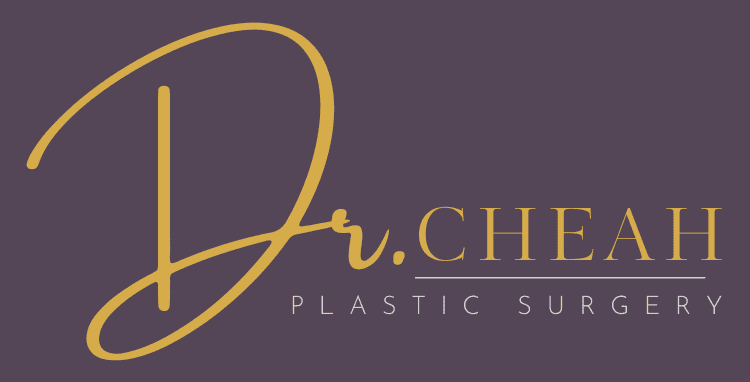This comprehensive guide to breast augmentation surgery is for women who are considering having an operation to enlarge their breasts. We advise that you talk to a plastic surgeon and only use this information as a guide to the procedure.
A breast augmentation/enlargement (also known as Breast Augmentation/Mammoplasty) operation usually involves placing an artificial breast implant either beneath your breast tissue or under your chest muscle (pectoralis major muscle) behind your breast.
Breast augmentation can:
- Increase fullness and projection of your breasts
- Improve the balance of your figure
- Enhance your self-image and self-confidence
Here’s The Comprehensive Guide To Breast Augmentation Surgery
Why have breast enlargement operations?
Every woman is special in her way and similarly, the reasons for having a breast enlargement surgery differ in all. The most common reasons why you may choose to enlarge your breasts include:
- to enhance the body contour of a woman, who for personal reasons feel that their breast size is too small and desires to achieve the cosmetic result.
- loss of breast volume after pregnancy and breastfeeding (although enlargement will not lift them)
- to restore breast shape after partial or total loss of breast for various conditions.
- a difference in size between your two breasts, hence for symmetry
- to replace existing breast implants for cosmetic or reconstructive reasons
Breast augmentation surgery is contraindicated in women with untreated breast cancer or premalignant breast disorders, active infection anywhere in the body, or individuals who are currently pregnant or nursing. Individuals with a weakened immune system (currently receiving chemotherapy or drugs to suppress the immune system), conditions that interfere with blood clotting or wound healing, or have reduced blood supply to the breast tissue from prior surgery or radiation therapy treatments may be at higher risk for complications and poor surgical outcomes. A woman must be at least l8 years of age for cosmetic breast augmentation.
What it won’t do
Breast augmentation does not correct severely drooping breasts. If you want your breasts to look fuller and to be lifted in case of sagging, a breast lift may be required in conjunction with breast augmentation.
A breast lift can often be done at the same time as your augmentation or may require a separate operation. Your plastic surgeon will assist you in making this decision.
Consultation with your surgeon
What to expect during your consultation?
The success and safety of your breast augmentation procedure depend very much on your complete candidness during your consultation. You’ll be asked several questions about your health, desires, and lifestyle.
Be prepared to discuss:
(Please fill out the medical questionnaire provided to you before meeting the surgeons)
- Why you want the surgery, your expectations, and desired outcome
- Medical conditions, drug allergies, and medical treatments
- Use of current medications, vitamins, herbal supplements, alcohol, tobacco, and drugs
- Previous surgeries
- Family history of breast cancer and results of any mammograms or previous biopsies
Your surgeon may also:
- Evaluate your general health status and any pre-existing health conditions or risk factors
- Examine your breasts, and may take detailed measurements of their size and shape, skin quality, and placement of your nipples
- Take photographs for your medical record
- Discuss your options and recommend a course of treatment
- Discuss likely outcomes of breast augmentation and any risks or potential complications
- Discuss the use of anesthesia during your breast augmentation
Preparing for surgery:
Before breast surgery, you may be asked to:
- Get lab testing or a medical test (preoperative evaluation for breast)
- Take certain medications or adjust your current health needs
- Stop smoking well in advance of surgery (6 weeks before surgery)
- Avoid taking aspirin, anti-inflammatory drugs, and herbal supplements as they can increase bleeding.
Special instructions you receive from the Surgeon or Anesthetist:
- What to do on the day of breast surgery
- Post-operative care and follow-up
- Informed Consent form to cover all the risk
Your plastic surgeon will also discuss where your procedure will be performed. Under normal circumstances, you will be in the hospital for 1-2 nights after surgery.
Procedural Steps:
Step 1 – Anaesthesia
Medications are administered for your comfort during the surgical procedure. Breast augmentation surgery is done under general anesthesia. Your anesthetist will be explained during or after you consult with the surgeons and also after the results of your pre-operative check.
Step 2 – The incision
Incisions are made in inconspicuous areas to minimize visible scarring. You and your plastic surgeon will discuss which incision options are appropriate for your desired outcome. There are 3 main incision options:
Inframammary incision
Placing the incision in the crease under the breasts, slightly above where the breast and rib cage meet, is known as an inframammary incision. It is very popular with surgeons.
Periareolar Incisions
The periareolar approach is a small incision underneath the nipple-areolar complex which camouflages beautifully with the darker pigment of the areola.
A periareolar incision is made between the pink or brownish skin that surrounds your nipple (the areola) and the regular skin of your breast. This type of incision is a good choice for inserting breast implants if you are also having an areola reduction or certain types of breast lifts.
There is a small chance of decreased nipple sensation with areolar incisions, but this is usually temporary. You also may be more likely to experience difficulty breastfeeding with periareolar incisions. This is an important consideration if you are thinking about having children.
If you choose the periareolar incision and become pregnant, you might also want to consult with a lactation specialist if you decide to breastfeed. A periareolar incision also carries an increased risk of a staph infection compared to other breast implant incisions, because staph bacteria can be found in the milk ducts of the nipple. These ducts may be cut during this type of insertion.
Transaxillary (Armpit) Incision
Breast implants can also be inserted through incisions in the armpits (transaxillary incisions). Inserting breast implants this way can be done endoscopically.
The surgeon creates tunnels to the sites where the breast implants will be placed. Usually, transaxillary incisions are between 1 and 1.5 inches long, depending on the type of implant.
Just as with implant placement, and implant type and size, breast implant incision patterns should be discussed during your initial consultation with a board-certified plastic surgeon. Ask your surgeon what he recommends for your surgery, and why.
Step 3 – Choosing the Right Breast implant
Breast enlargement and implants size and shape are important, so be honest and open about your expectations when talking with your surgeon. Implant type and size will be determined not just by your desired increase in size but more importantly by your breast anatomy, skin elasticity, and natural body type.
Options for Breast Implants
A variety types of breast implants options exist. Breast implants differ by shape, texture, and profile. Breast implants may be round or contoured, and may have a smooth or textured surface. The breast implant profile may be standard, moderate, or high. Breast implants also vary by size or volume.
Contoured shift one of the main decisions involved in breast augmentation is whether to use silicone or saline implants. Both silicone and saline implants are available in similar shapes, sizes, and textures but they differ in composition filling the implant.
Silicone implants are made of a silicone rubber shell filled with a silicone gel that feels very similar to natural breast tissue. Silicone implants are also considered to be safe for use and were re-approved by the US FDA in 2006. This animation provides details about silicone implants and the various insertion and positioning options.
Saline implants are made of a silicone rubber shell and are filled with sterile salt water, or saline solution. Saline solution has the same salt concentration as the body, which means that the solution presents no health risk.
After determining whether you want saline or silicone, your surgeon will help you choose the proper style and size of breast implants based on your lifestyle, body contours, and existing amount of breast tissue to achieve the cup size and appearance you desire
An ultrasound or MRI screening can assess the condition of breast implants.
Implant manufacturers occasionally introduce new styles and types of implants, so there may be additional options available.
- Currently Saline implants are FDA-approved for augmentation in women 18 years of age and older.
- Currently Silicone implants are FDA-approved for augmentation in women 22 years of age and older.
- Saline or silicone implants may be recommended at a younger age if used for reconstruction purposes.
Step 4 – Insert and Breast Implant Placement.
After the incision is made, a breast implant is inserted into a pocket either:
- Under the pectoral muscle (a submuscular placement), or
- Directly behind the breast tissue, over the pectoral muscle (a submammary/ subglandular placement)
- The method for inserting and positioning implants depends on the type of implant, degree of enlargement desired, your body type, and your surgeon’s recommendations.
Step 5 – Closing the incisions:
Incisions are closed with layered sutures in the breast tissue and with sutures, skin adhesive, or surgical tape to close the skin. Over time the incision lines will fade.
Step 6 – See the results
And after breast surgery, the results of breast augmentation are immediately visible. Over time, post-surgical swelling will resolve, and incision lines will fade. Satisfaction with your new image should continue to grow as you recover and realize the fulfillment of your goal for fuller breasts.
Important facts about the safety and risks of breast augmentation
The decision to have breast augmentation surgery is extremely personal and you’ll have to decide if the benefits will achieve your goals and if the risks and potential complications are acceptable.
Your plastic surgeon will explain in detail the breast augmentation risks associated with surgery. You will be asked to sign consent forms to ensure that you are fully understand the procedure you will undergo and any risks or potential complications.
The procedure risks include:
- Unfavorable scarring
- Bleeding (hematoma)
- Infection
- Poor healing of incisions
- Changes in nipple or breast sensation, may be temporary or permanent
- Capsular contracture, which is the formation of firm scar tissue around the implant
- Implant leakage or rupture (Saline implants)
- Wrinkling of the skin over the implant
- Anesthesia risks
- Fluid accumulation
- Blood clots
- Pain, which may persist
- Deep vein thrombosis, cardiac and pulmonary complications
- Possibility of revisional surgery
- Other side effects (Please note the list is not exhaustive)
- Downward slide of implant
- Breast asymmetry
Breast enlargement using implants does not impair breast health. A careful review of scientific research conducted by independent groups such as the Institute of Medicine has found no proven link between breast implants and autoimmune or other systemic diseases.
Other important considerations:
- Breast implants are not guaranteed to last a lifetime and future surgery may be required to replace one or both implants.
- Pregnancy, weight loss, and menopause may influence the appearance of augmented breasts throughout your lifetime.
Your Breast Augmentation recovery
After a post-surgical recovery period of 24 to 48 hours and an additional reduced-activity period of a few days, you will likely experience discomfort, swelling, bruises, and tightness around the breasts for a few weeks.
Exercise and normal activity can resume in the direction of your plastic surgeon. Over time, post-surgical swelling will decrease, and incision lines will fade.
You will be given specific instructions that may include:
- How to care for your breasts following surgery, medications to apply or take orally to aid healing and reduce the risk of infection, and when to follow up with your plastic surgeon.
- The use of garments (eg. wear a sports bra) to support the new breast will also be given to enhance the recovery.
- Be sure to ask your plastic surgeon specific questions about what you can expect during your recovery period.
- Where will I be taken after my surgery is complete?
- What medication will I be given or prescribed after surgery?
- Will I have dressings/bandages after surgery?
- When will they be removed?
- Are stitches removed? When?
- When can I resume normal activity and exercise?
- When do I return for follow-up care?
When you go home
If you experience shortness of breath, chest pains, or unusual heartbeats, seek medical attention immediately. Should any of these complications occur, you may require hospitalization and additional treatment. The practice of medicine and surgery is not an exact science. Although good results are expected, there is no other surgery may be necessary.
Be careful
Following your physician’s instructions is the key to the success of your surgery. It is important that the surgical incisions are not subjected to excessive force, abrasion, or motion during the time of healing. Your doctor will give you specific instructions on how to care for yourself.
Is Breast Augmentation Surgery Results Will Be Long-lasting
The results of your breast augmentation surgery will be long-lasting. You will find it easier to wear certain styles of clothing and swimwear. Like many women who have had breast augmentation, you may also have a boost in self-confidence.
Implants may need to be replaced or revised
It’s important to know that your breast implants are not permanent and may require replacement during your lifetime. You should expect to have future visits with your plastic surgeon to discuss changes in your breasts. Over time, your breasts can change due to aging, weight fluctuations, hormonal factors, and gravity. If, after years, you become dissatisfied with the appearance of your breasts, you may choose to undergo a breast lift or implant exchange to restore a more youthful contour.





